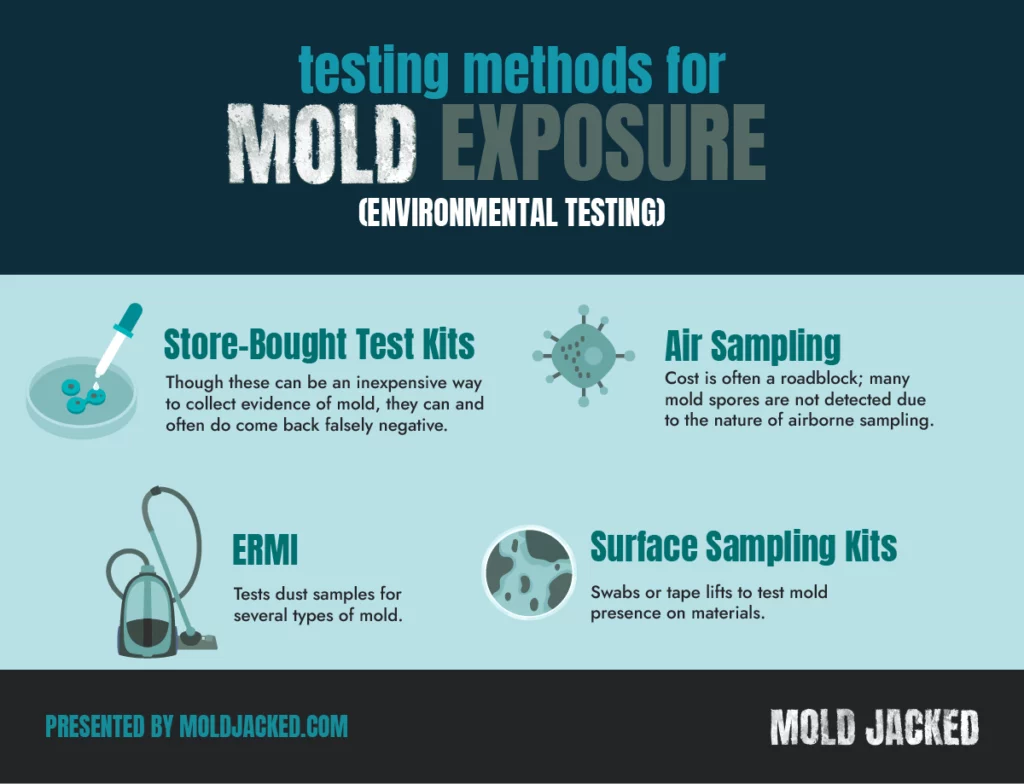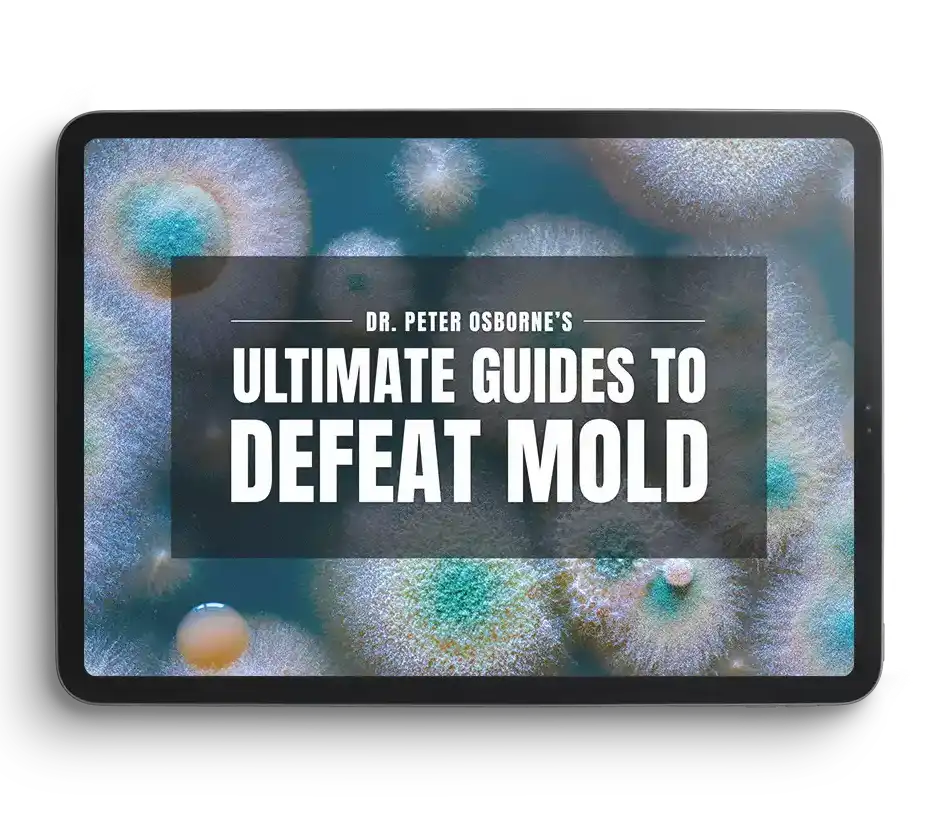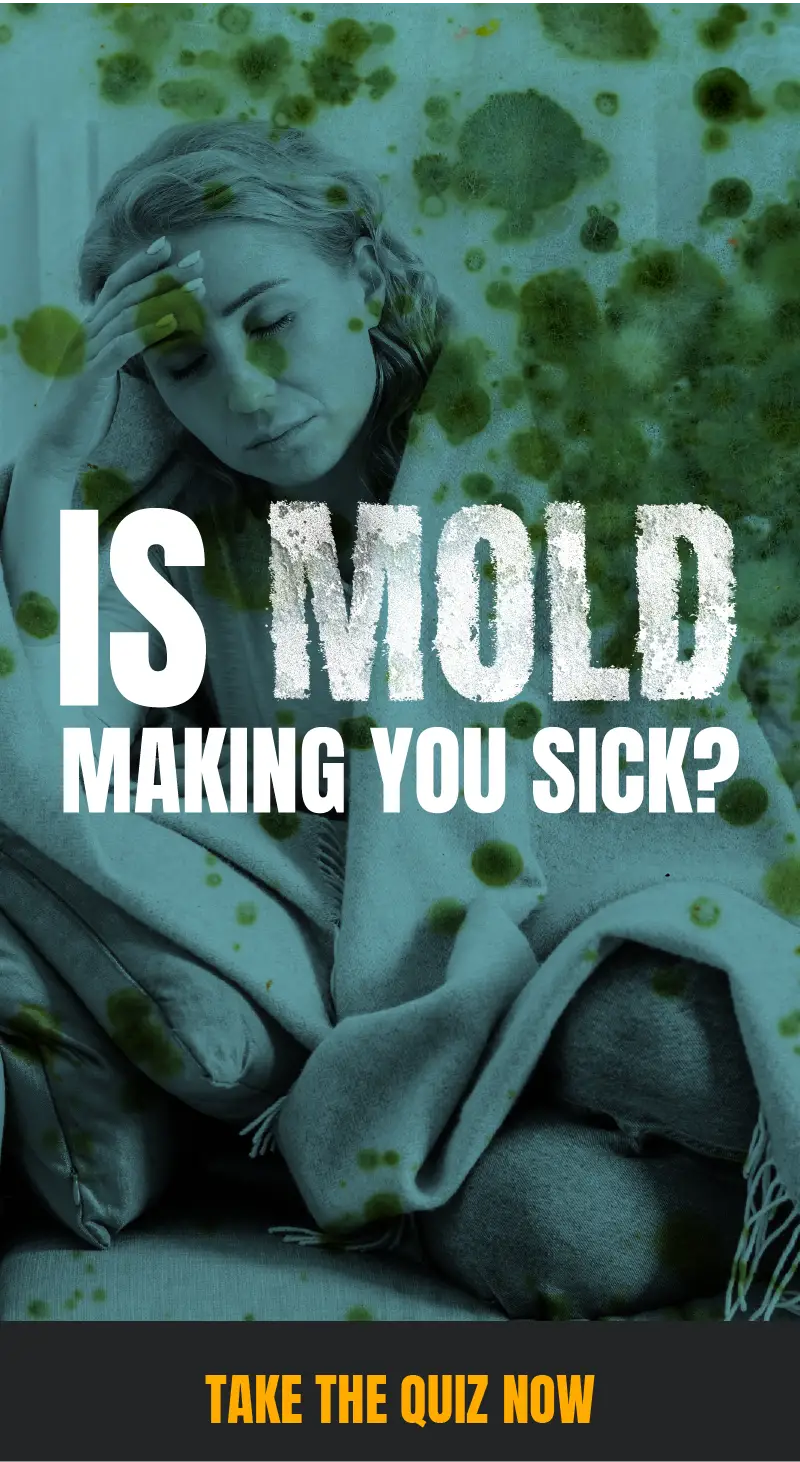Understanding Mold Toxicity: Early Symptoms of Mold Toxicity
Mold toxicity, also known as mold illness or mycotoxicosis, is a condition that results from prolonged exposure to mold spores and their toxic byproducts, known as mycotoxins. While mold naturally exists in the environment, its presence in indoor spaces, especially in water-damaged buildings, can lead to serious health concerns.
Many individuals suffer with symptoms without realizing that mold exposure could be the underlying cause. Understanding the early symptoms of mold toxicity, and knowing the best testing methods are essential for proper diagnosis and treatment. This article will break down:
CONTENTS
ToggleWhat Causes Mold Toxicity?
Mold toxicity occurs when individuals inhale or come into direct contact with mold spores and mycotoxins. A common misconception is that new homes or new buildings are safer than older construction. But in reality, rapid construction, unskilled laborers, and construction errors in new homes are common.
Mold exposure can happen in:
- Damp or water-damaged homes (from leaks, floods, poor ventilation, & construction defects)
- Workplaces with poor air circulation (offices, schools, basements)
- Buildings with hidden mold growth in walls, carpets, and HVAC systems
- High-humidity areas such as bathrooms, kitchens, and basements
- Water-damaged or flooded vehicles
Once mold toxins enter the body, they can trigger immune responses, disrupt neurological function, and cause systemic inflammation.
Early Symptoms of Mold Toxicity
Mold exposure affects each person differently, depending on their immune system function, genetic predisposition, and length of exposure. Below are the most common early onset symptoms of mold toxicity:
1. Respiratory Issues
Since mold spores are airborne, respiratory problems are often the first signs of mold exposure. These types of reactions are commonly diagnosed as mold allergies. Symptoms include:
- Chronic nasal congestion and recurring sinus infections
- Persistent cough and wheezing
- Shortness of breath, even without physical exertion
- Post-nasal drip and sore throat
- Itchy & Watery Eyes
- Worsening of asthma symptoms
2. Allergic Reactions
Mold exposure can trigger allergic responses. Researchers estimate that at least 22% of the population have mold allergies. Allergic reactions are linked to several different types of symptoms, including:
- Itchy, red, or watery eyes
- Hives on the skin
- Sneezing, runny nose, and nasal congestion
- Atopy – skin rashes commonly diagnosed as eczema
- Inflammation and swelling in severe cases
3. Chronic Fatigue and Weakness
Mold exposure has been linked to chronic fatigue syndrome (CFS). Mycotoxins interfere with:
- Mitochondrial function, reducing energy production
- Hormonal imbalances, leading to adrenal fatigue
- Inflammation, causing persistent muscle weakness
Warning Sign:
If you feel exhausted despite getting enough sleep, mold exposure could be poisoning your cells and reducing their ability to produce energy.
4. Neurological and Cognitive Issues (Brain Fog)
One of the most concerning effects of mold toxicity is its impact on brain function. Symptoms may include:
- Memory loss and difficulty concentrating
- Chronic headaches or migraines
- Dizziness and balance problems
- Increased sensitivity to light and sound
Why does this happen?
Mycotoxins can cross the blood-brain barrier, leading to neuroinflammation and cognitive dysfunction. This can contribute to multiple chemical sensitivity (MCS) and chronic inflammatory response syndrome (CIRS).
5. Gastrointestinal Issues
Mold toxicity can also disrupt gut health, leading to:
- Nausea, bloating, and abdominal pain
- Chronic diarrhea or constipation
- Increased food sensitivities
- Leaky gut syndrome (damage to the intestinal lining)
Scientific Link:
Some mycotoxins, like ochratoxins and aflatoxins, are known to cause inflammation in the digestive system and damage beneficial gut bacteria.
Testing methods for mold exposure
If you suspect mold exposure, testing your environment and body can help to confirm whether or not mold is causing or contributing to your health issues.
1. Environmental Testing
How to test your home for mold: It is important to understand, that no one single test is considered a comprehensive investigation. Tests can and often do come back falsely negative. For this reason, it is highly recommended that you hire a qualified mold inspector should you suspect a mold issue in your home. That being said, below are some common tests that can be performed.
- DIY Mold Test Kits: Available online or at hardware stores, these test kits are an inexpensive way to collect evidence of mold. The problem with these tests is that the results can come back falsely negative, leading to confusion around the issue.
- Air Sampling: Measures airborne mold spores. According to the WHO, accurate air testing requires a minimum of 27 air samples. This is often a roadblock due to cost. Additionally, many toxic mold spores are not detected by air tests because they fall and settle on the floor, thus eluding the air pump.
- ERMI (Environmental Relative Moldiness Index): A DNA-based mold test that can detect several different types of mold present from dust samples. This type of test is an excellent screening tool to identify mold. However; it does not help determine the source of the mold.
- Surface Sampling: These tests can be used specifically in areas where mold is suspected. They help to identify mold presence on walls, carpets, and in the duct work of HVAC systems.
Pro Tip: If your home smells musty, but you don’t see visible mold, hidden mold may still be present inside walls, HVAC ducts, or under carpets. Bringing in an expert is sometimes necessary to figure it out. Check out our free guide on How to Hire a Competent Mold Inspector.
2. Medical Testing
How to test your body for mold exposure: There are numerous tests that doctors can use to help identify mold related illnesses. A few examples of tests are listed below:
- Mycotoxin Urine Test – Detects mold toxins (mycotoxins) in the body.
- Blood Tests (IgG, IgA, & IgE Antibodies) – Identifies immune reactions to mold spores and mycotoxins.
- Nasal Swab Test – Can be used to identify fungal growth in the sinuses.
- Inflammation Markers (TGF-beta1, MMP-9, C4a) – Indicate systemic inflammation that could be caused by mold and its toxins.
Best Practice: Consult a functional medicine doctor who is mold literate. You might also consider reading our guide on How to Hire a Mold Literate Doctor.
How to remove mold from your home
Mold remediation is a complex issue, and there are many things that need to be assessed and addressed to effectively resolve mold issues in the home. Many opt to move out of their home to escape the mold. This can be an effective strategy, but be careful. All too often, I see people move out of mold into a new place that also has mold. If you are looking to move, please read my comprehensive guide – How to Avoid Buying or Renting a Moldy Home.
Many opt for a DIY approach to remediation. If you have a major mold problem, this can be dangerous, and in the long run, more costly than working with a qualified professional. It is important to remember that cleaning or removing mold should only be attempted after the home has been properly assessed. Successful remediation requires that you know why the mold grew in the first place. The reason mold grows is because of water infiltration. This is sometimes obvious – i.e. floods and leaky pipes. It is sometimes not obvious – i.e. faulty construction, HVAC system issues. Any successful attempt to remediate should include a diagnostic assessment aimed at determining why the mold was able to grow. If an inspection has not determined the “why”, cleaning or removing mold will be unsuccessful. The mold will simply grow back.
- Fix leaks (roof, walls, pipes) immediately
- Monitor humidity with a hygrometer, and use dehumidifiers to keep it below 50%
- Ventilate bathrooms and kitchens – Ensure they have been properly installed. This is a common problem where improper installation, lack of use, or mechanical failure can contribute to excess moisture build up in these areas.
- Read our comprehensive guide on mold remediation here.
- Hire a professional mold remediation company if needed.
Pro Tip: Avoid using bleach – it is ineffective against mold and does not eliminate mycotoxins.
FAQ: Mold toxicity and symptoms
What are the earliest symptoms of mold exposure?
The first symptoms usually involve respiratory issues (coughing, congestion, shortness of breath), allergic reactions (itchy eyes, sneezing), and fatigue.
Can mold make you sick instantly?
For highly sensitive individuals, symptoms can appear within minutes to hours. For others, prolonged exposure over weeks or months may be required before symptoms develop.
What happens if mold exposure is left untreated?
Long-term exposure can lead to chronic respiratory disease, neurological dysfunction, immune suppression, severe inflammation, and can even be life threatening. Check out our comprehensive guide on Mold Toxicity Symptoms here.
Can I test for mold in my body?
Yes! Urine mycotoxin tests, blood antibody tests, and inflammation markers can help identify mold-related illness. You can check out our comprehensive guide on mold testing here.
How do I detox from mold exposure?
For a detailed breakdown on how to detox from mold exposure, check out our complete MOLD Detox Guide. Below are some general recommendations to help you get started:
- Either remove the mold from your environment, or remove yourself. If you are looking to move out of mold, you might find our guide on How to Avoid Buying or Renting a Moldy Home helpful.
- Take binders (activated charcoal, bentonite clay)
- Support liver detox (glutathione, NAC, milk thistle)
- Improve gut health (probiotics, consume only real non processed foods)
Conclusion
Mold toxicity is an underdiagnosed health issue that affects millions of households. Recognizing early symptoms and taking proactive steps to remove mold from your environment can help prevent long-term health complications. Mold and mycotoxin exposure can cause symptoms that mimic many different medical conditions. It is important to consider mold exposure when you have been given an idiopathic (unknown cause) diagnosis. For a comprehensive list of diseases, symptoms, and syndromes that mold exposure can cause, check out our Ultimate Guide to Mold Symptoms.


